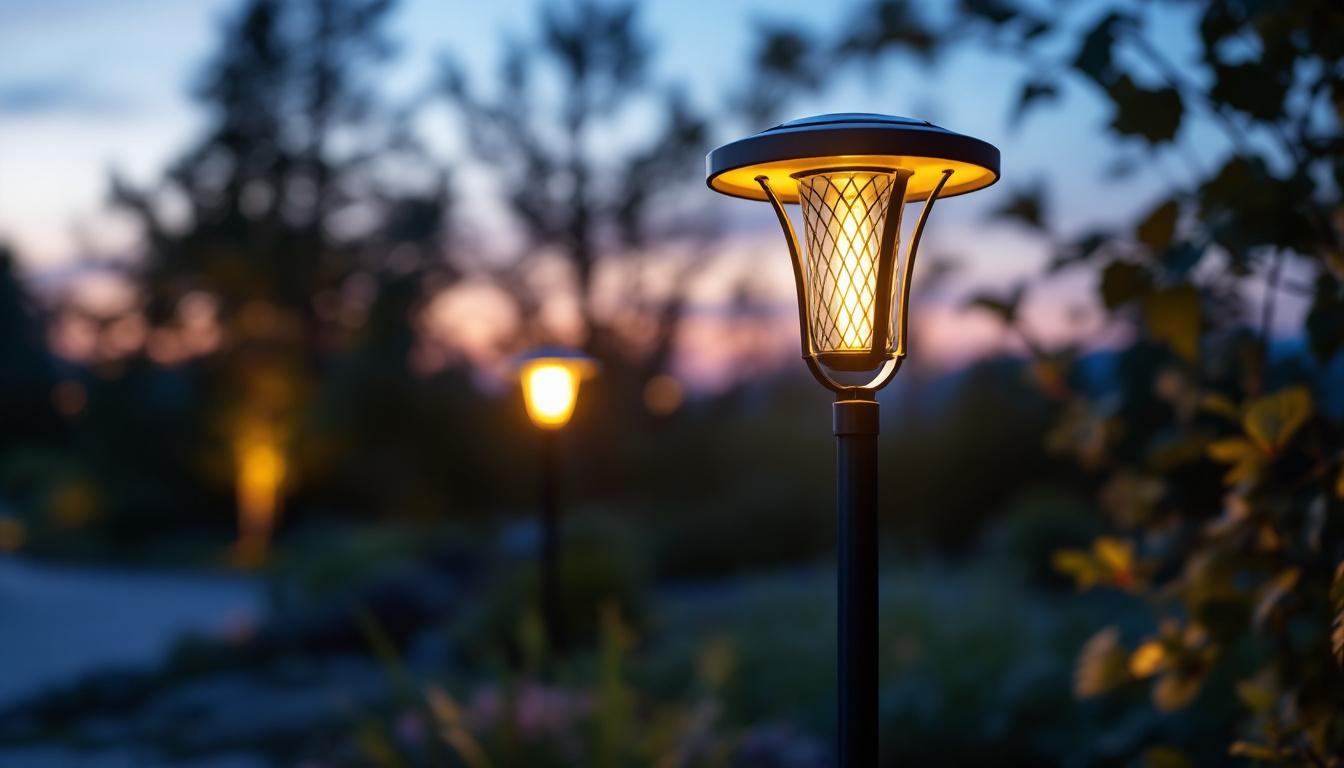
In the ever-evolving world of lighting technology, automatic light sensor switches have emerged as a game-changer for both residential and commercial applications. These devices not only enhance energy efficiency but also provide convenience and safety. For lighting contractors, understanding the intricacies of these switches is essential to meet client demands and stay competitive in the market. This article will delve into the key points that lighting contractors need to know about automatic light sensor switches.
Automatic light sensor switches are devices designed to control lighting based on the presence or absence of natural light. They utilize various technologies, including photodiodes and motion sensors, to detect light levels and occupancy. This section will explore the fundamental aspects of these switches, their types, and how they operate.
There are primarily two types of automatic light sensor switches: daylight sensors and motion sensors. Daylight sensors adjust the lighting based on the ambient light levels, ensuring that artificial light is only used when necessary. This is particularly useful in spaces with large windows or skylights, where natural light can vary significantly throughout the day.
On the other hand, motion sensors activate lighting when they detect movement within a specified range. These sensors are ideal for areas like hallways, garages, and outdoor spaces, where lighting is needed only when someone is present. Understanding the differences between these types of sensors allows contractors to recommend the most suitable option for their clients’ needs.
Automatic light sensor switches operate through a simple yet effective mechanism. Daylight sensors measure the intensity of natural light and adjust the artificial lighting accordingly. For instance, if the ambient light is sufficient, the switch will turn off the lights, conserving energy. Conversely, if the light levels drop below a certain threshold, the switch will activate the lights.
Motion sensors, in contrast, rely on infrared or ultrasonic technology to detect movement. When a person enters the sensor’s range, the switch activates the lights. After a predetermined period of inactivity, the lights will automatically turn off, further enhancing energy efficiency. This dual functionality of both sensor types makes them invaluable in modern lighting design.
The adoption of automatic light sensor switches offers numerous benefits that can significantly impact both energy consumption and user experience. For lighting contractors, highlighting these advantages can help in persuading clients to invest in these innovative solutions.
One of the most compelling reasons to install automatic light sensor switches is their ability to enhance energy efficiency. By ensuring that lights are only on when needed, these switches can lead to substantial energy savings. This not only reduces electricity bills for clients but also contributes to a more sustainable environment.
In commercial settings, where lighting can be extensive and often left on unnecessarily, the savings can be even more pronounced. By integrating these switches into lighting designs, contractors can help businesses lower their operational costs while promoting eco-friendly practices.
Automatic light sensor switches also play a crucial role in enhancing safety and security. In outdoor spaces, such as parking lots or walkways, motion-activated lights provide illumination when needed, reducing the risk of accidents and improving visibility for pedestrians.
Moreover, in residential settings, these switches can deter potential intruders by ensuring that lights are activated when movement is detected, creating the illusion of occupancy. This added layer of security is a significant selling point for clients looking to enhance their home safety.
Beyond energy savings and security, automatic light sensor switches offer unparalleled convenience. Homeowners no longer need to fumble for light switches in dark hallways or enter a room only to find it unlit. With motion-activated lights, the environment becomes more user-friendly, especially for individuals with mobility challenges.
In commercial spaces, the convenience factor extends to employees and customers alike. Well-lit environments contribute to a positive experience, encouraging longer visits and enhancing productivity. Contractors can leverage this aspect to showcase the value of automatic light sensor switches to potential clients.
While the benefits of automatic light sensor switches are clear, there are several installation considerations that lighting contractors must keep in mind. Proper installation is critical to ensure optimal performance and client satisfaction.
The effectiveness of automatic light sensor switches largely depends on their location and placement. For daylight sensors, it is essential to position them where they can accurately measure ambient light levels without obstruction. This might mean avoiding areas with heavy shading or direct sunlight that could skew readings.
For motion sensors, placement is equally crucial. Contractors should consider the coverage area of the sensor and ensure it is installed at an appropriate height and angle to maximize detection. Avoiding placement near heat sources or moving objects can also prevent false activations.
When installing automatic light sensor switches, contractors must also consider the existing wiring and compatibility with current lighting systems. Some sensors require specific wiring configurations or may not be compatible with certain types of fixtures. Ensuring that the switch is suitable for the client’s existing setup will prevent future issues and enhance overall satisfaction.
Additionally, understanding the power requirements of the sensor is vital to avoid overloading circuits. Properly assessing the electrical system before installation can save time and prevent complications down the line.
Like any electrical device, automatic light sensor switches require regular maintenance and occasional troubleshooting. Educating clients on proper care can enhance the longevity and effectiveness of these devices.
Dust and debris can accumulate on the sensors, impairing their ability to function correctly. Regular cleaning of the sensor lenses and surrounding areas is essential to maintain optimal performance. Contractors should advise clients on how to clean the sensors safely without damaging them.
In addition to cleaning, it is also important to check for any obstructions that may hinder the sensor’s ability to detect light or movement. Trees, furniture, or other objects may need to be repositioned to ensure the sensors can operate effectively.
Despite their reliability, automatic light sensor switches may encounter issues from time to time. Common problems include lights not turning on or off as expected, which can often be traced back to improper placement or wiring issues. Contractors should be prepared to assist clients in troubleshooting these problems.
Additionally, educating clients on how to reset the sensors or adjust sensitivity settings can empower them to resolve minor issues independently. Providing a simple troubleshooting guide can enhance client satisfaction and reduce the need for service calls.
For lighting contractors, effectively communicating the benefits and features of automatic light sensor switches to clients is essential. A well-informed client is more likely to appreciate the value of these devices and make an informed purchasing decision.
One of the most effective ways to sell automatic light sensor switches is through demonstration. Showcasing how these devices work in real-time can help clients visualize their benefits. Whether through a video presentation or a live demonstration, seeing the technology in action can significantly influence a client’s decision.
Highlighting case studies or testimonials from satisfied customers can also serve as powerful selling points. Potential clients are often more inclined to invest in solutions that have proven successful for others.
Clients may have concerns about the reliability or practicality of automatic light sensor switches. Addressing these concerns head-on can build trust and confidence in the technology. Providing information on the durability and warranty of the products can also alleviate fears about long-term performance.
Furthermore, discussing the return on investment (ROI) associated with energy savings can help clients understand the financial benefits over time. By presenting a comprehensive overview of the advantages, contractors can facilitate a smoother sales process.
The landscape of automatic light sensor technology is continually evolving, with advancements that promise even greater efficiency and functionality. Staying abreast of these trends is crucial for lighting contractors aiming to remain competitive.
One of the most significant trends is the integration of automatic light sensor switches with smart home systems. As more homeowners adopt smart technology, the demand for compatible devices is on the rise. Automatic light sensors that can be controlled via smartphone apps or integrated with home automation systems offer added convenience and control.
This integration allows users to customize settings based on their preferences, such as adjusting sensitivity levels or scheduling lighting based on their routines. Contractors should familiarize themselves with these smart technologies to provide clients with the most up-to-date options.
Advancements in sensor technology are also paving the way for more sophisticated automatic light sensor switches. Newer models may feature enhanced detection capabilities, allowing them to differentiate between human movement and pets, reducing false activations.
Additionally, improvements in energy efficiency and design aesthetics are making these sensors more appealing to clients. As technology continues to advance, contractors should be prepared to adapt and offer the latest innovations in lighting solutions.
Automatic light sensor switches are a vital component of modern lighting design, offering energy efficiency, enhanced safety, and convenience. For lighting contractors, understanding their operation, benefits, and installation considerations is essential for providing top-notch service to clients. By staying informed about trends and advancements in technology, contractors can position themselves as knowledgeable professionals in the lighting industry.
As the demand for energy-efficient and user-friendly lighting solutions continues to grow, embracing automatic light sensor switches can be a significant advantage for lighting contractors. By educating clients and demonstrating the value of these devices, contractors can foster long-term relationships and ensure customer satisfaction.
Ready to elevate your lighting projects with the most efficient automatic light sensor switches on the market? Look no further than LumenWholesale, where we provide contractors with the highest quality, spec-grade lighting products at unbeatable wholesale prices. Say goodbye to local distributor markups and hello to superior lighting solutions that meet the highest industry standards. With LumenWholesale, bulk buying is a breeze, thanks to our free shipping policy, ensuring you get the best value without any hidden fees. Don’t compromise on quality or cost. Discover the best value in wholesale lighting and make your next project shine with LumenWholesale.

Discover essential insights into metal solar lights that every lighting contractor should know.

Discover the key factors that distinguish top lighting contractors when it comes to installing LED high bay lights with a 5000K color temperature.

Illuminate your outdoor space with expert advice from top lighting contractors.

Discover the top choices in recessed lighting with our comprehensive guide tailored for lighting contractors.